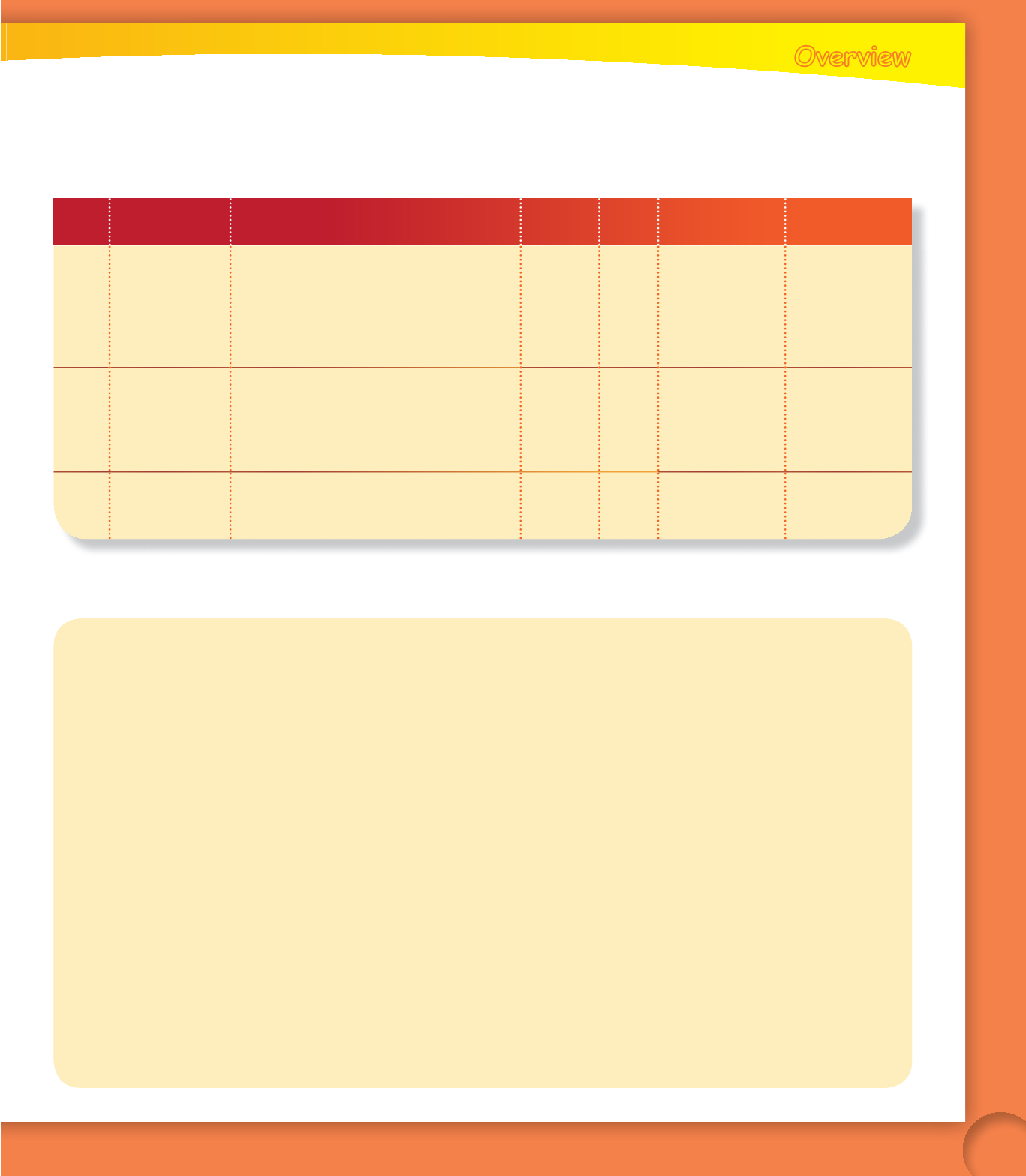

61
Unit 6
Overview
297J
Day Objectives
Sessions
Activities Time Standards
Resources/
Homework
13
To organize an
art exhibition and
describe works
of art, and to
assess student
proficiency
Proyecto
/ Assessment
(350–351)
r
Warm-Up: Prepare project presentations
r
Project presentations
r
Autoevaluación
r
Test
10 m.
45 m.
10 m.
25 m.
1.1, 1.2, 1.3, 2.1,
2.2, 3.1, 3.2, 5.1,
5.2
14
To prepare for the
AP* Exam
Hacia el
AP* Exam
(352–353)
r
Warm-Up: Test introduction
r
Test: Presentational Speaking: Cultural
Comparison
r
Review and correction of the test
15 m.
40 m.
35 m.
1.3, 2.1, 2.2, 4.2,
5.1, 5.2
15
To practice oral
skills in social
interaction
Final Activity
r
Warm-Up: Presentation of the activity
r
Role-play activity
15 m.
75 m.
1.1, 1.2, 1.3, 2.1,
2.2, 4.2, 5.1, 5.2
Final Activity (Day 15)
Presentation
.
Explain to students that they will be participating in a role-play
situation related to one of the topics covered in this unit. You may
wish to suggest the following situations:
1. conducting a guided tour of a museum in which they compare
and contrast two works of art by a Hispanic artist;
2. planning a mural for the Spanish classroom and explaining the
design choices;
3. conducting a walking tour of the downtown area of a Spanish-
speaking city and describing the main buildings;
4. being part of a committee who has to decide on a new sculpture
for their community;
5. retelling a short story by a Hispanic writer;
6. acting out a scene from a novel by a Hispanic writer (e.g., the
windmills scene from
Don Quijote
).
Preparation
.
Divide the class into small groups and assign a different situation to
each group. Ask students to brainstorm the details of their assigned
situation and the different characters who will take part in it. Then
allow students time to write the script cooperatively. They should
plan for a role-play of about five to six minutes.
Revision and Rehearsal
.
Ask students to revise their scripts, paying attention to accurate use
of vocabulary and grammar structures. At this point, students may
also correct any inconsistencies in the storyline, add a punch line,
or make other minor changes they deem appropriate. Then allow for
rehearsal time. Explain to students that they will be able to improvise,
or ad-lib. However, rehearsing their lines a few times will give them
confidence and improve their fluency.
Dramatization and Evaluation
.
Call on each group to role-play their assigned situation. Assess
students on fluency, pronunciation, content, organization, and correct
use of target vocabulary and grammar. You may want to prepare a
short evaluation questionnaire that the class fills in at the end of
each role-play. If time permits, discuss as a class the situations upon
which the role-plays were based.
Book 4 Unit 6


















